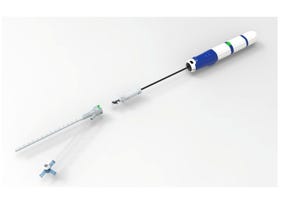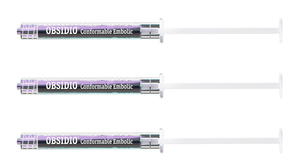February 1, 2007
In 2006, U.S. venture capital investment in the medical device and equipment industry rose substantially over 2005, according to a report released by Ernst & Young LLP (New York City) and Dow Jones VentureOne (San Francisco). During 2006, the industry recorded 239 deals--20 more than in 2005. Overall, 2006 investment in the industry totaled $2.63 billion, representing the largest annual capital invested in industry on record.
Last year, the healthcare industry as a whole--encompassing medical devices and equipment, biopharmaceuticals, medical services, and medical software--saw a deal flow increase of 5% and a capital investment increase of 12% over 2005 levels. Overall, healthcare companies attracted 628 investment deals, representing a total of $8.25 billion (see Table I).
| Healthcare VC Investment | Medtech VC Investment | Medtech % of Total Healthcare Investment |
2000 | 9.48 | 2.18 | 23 |
2001 | 6.81 | 1.91 | 28 |
2002 | 5.95 | 1.75 | 29 |
2003 | 6.25 | 1.86 | 30 |
2004 | 7.26 | 1.73 | 24 |
2005 | 7.33 | 2.18 | 30 |
2006 | 8.25 | 2.63 | 32 |
Table I. U.S. venture capital investment in all healthcare companies, and medical device and equipment companies, 2000–2006. Source: Ernst & Young LLP and Dow Jones VentureOne. |
Across all industries, U.S. venture capital investment reached $25.75 billion, an 8% increase over 2005 levels. In addition to the medical device and equipment industry's strong showing, the rise was due in part to strong numbers in the information services and alternative energy industries.
"There was a nice balance of investment in 2006 with investors deploying a significant amount of capital to later-stage portfolio companies, but also supporting the emerging class of start-ups," said Joseph Muscat, Americas director of Ernst & Young's venture capital advisory group. "The expanding opportunities for venture-backed companies to achieve liquidity through an initial public offering, merger, or acquisition are having an impact. It was a relatively strong year for these transactions with investors recognizing the need to support their companies for as long as six years before they can achieve a successful exit."
Data related to the Ernst & Young LLP and Dow Jones VentureOne Quarterly Venture Capital Report are available at www.venturecapital.dowjones.com/press/statistics.html.
|
On a regional basis, the medical device financing trend was echoed by a new report from BioEnterprise (Cleveland), which reported that 2006 investment in Midwestern medical device companies totaled $356 million--an increase of more than 70% over the $205 million reported for 2005.
"The region has always been rich in research and industry assets," says Baiju Shah, president of BioEnterprise. "That rich base is now translating into a growing stream of high-quality healthcare start-ups due to progressive policies and programs such as state investments in research institutions, creation of new capital sources, and professional technology development groups."
Of the $792 million attracted by 135 Midwestern healthcare start-ups in 2006, medtech companies accounted for about 45% of the investment, with biopharmaceutical companies accounting for an additional 44% and healthcare software and services companies attracting the remaining 11% of funds. In 2005, medical device companies attracted 37% of investments, with biopharmaceuticals and healthcare software and service companies accounting for 35% and 28%, respectively.
"The 70% jump in medical device investments was driven in particular by larger, later-stage financings in the Midwest medtech sector," Shah says. "The three sectors that gained the most attention in the Midwest were cardiovascular devices, neurostimulation therapies, and orthopedics companies. In addition, several significant medtech exits occurred in the Midwest--such as Restore Medical's initial public offering and Suros Surgical's sale to Hologic--which has continued to raise awareness of the region as an area with potential for not only good technologies, but also great investments."
Shah says the most significant Midwest medtech investments in 2006 were EnteroMedics and CVRx--both of which are neurostimulation companies--and Pioneer Surgical, an orthopedics company.
In the Midwest in 2006, the Minneapolis-St. Paul region attracted the most investment among all healthcare sectors, with $233.9 million in financing across 22 companies. The second most lucrative region was Chicago, with $101.6 million in financing across 12 companies.
© 2007 Canon Communications LLC
You May Also Like



